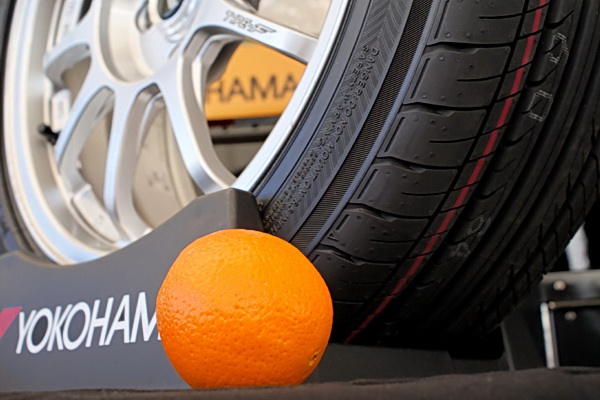
Orange oil-infused tires are the new green for saving the environment
Yokohama has introduced a new tire model that replaces 80% of the petroleum based products that used to make up a tire’s composition with non-petroleum based products. The new dB Super E-specpassenger tire uses Yokohama’s Super Nano-Power Rubber compound and Advanced Inner Linerto create a tire that is 80% petroleum free, performs better than conventional tires made of vulcanized rubber, and has ultra-low rolling resistance.
The new Yokohama orange oil-infused tire is their first product designed specifically for hybrid automobiles. Introduced in Japan in 2007, the dB super E-spec reconciles the conflict between low rolling resistance - key to delivering improved fuel economy - and superior grip in both wet and dry conditions while offering the quiet, comfortable ride that compliments the silent driving characteristics of hybrids. This translates directly into improved fuel economy as rolling resistance can account for up to 20 per cent of the friction that a vehicle must overcome when moving.

If you reduce rolling resistance, you also reduce grip - at least that is what basic physics tells me - but Yokohama has managed to work out a nice compromise. Their engineers accomplished this by developing a rubber compound based on orange oil. Orange oil is a naturally sticky substance and, when combined molecularly with other oils, allows the compound to become soft when warm, providing more grip as the tire is driven harder, and then return to a stiffer compound during less stressful driving conditions.
We tried out Yokohama’s eco-friendly tires on MINI Coopers and found that the dB Super E-spec tire is not only quiet, but provides pretty good performance for a tire that has fuel economy at the top if its design goal list.


Several runs on a slalom course revealed a number of good things about these green tires with an orange a-peel. Road grip was good enough to keep our test MINI Cooper on track without the usual tire squeal from typical OE all-season passenger tires. Turn-in response was predictable and accepted input from the driver better than a trained Doberman. Our 50 - 0 dry braking test posted some very good numbers. From 52 mph to zero, we only needed 85 feet to come to a complete stop. TireRack tested OE and aftermarket tires in the same class and typical results from their dry braking test showed tires needed 97 to 101 feet to stop after standing on the brakes from 50 mph.
Off the test course the E-spec tires had minimal road noise across rough surfaces, but more miles need to be logged on a variety of surfaces before we can fully evaluate the tire’s road noise level and comfort.










0 comments:
Post a Comment